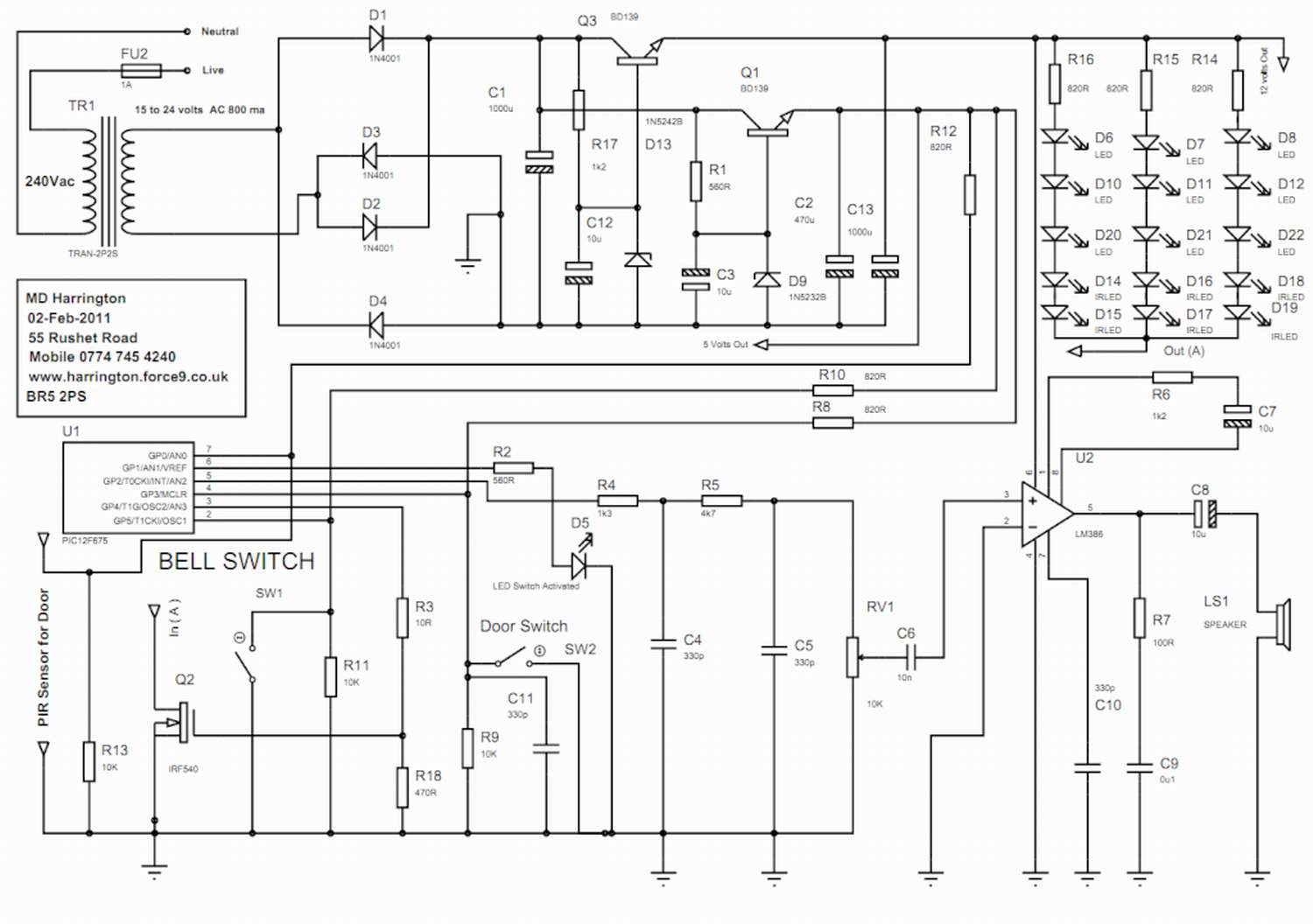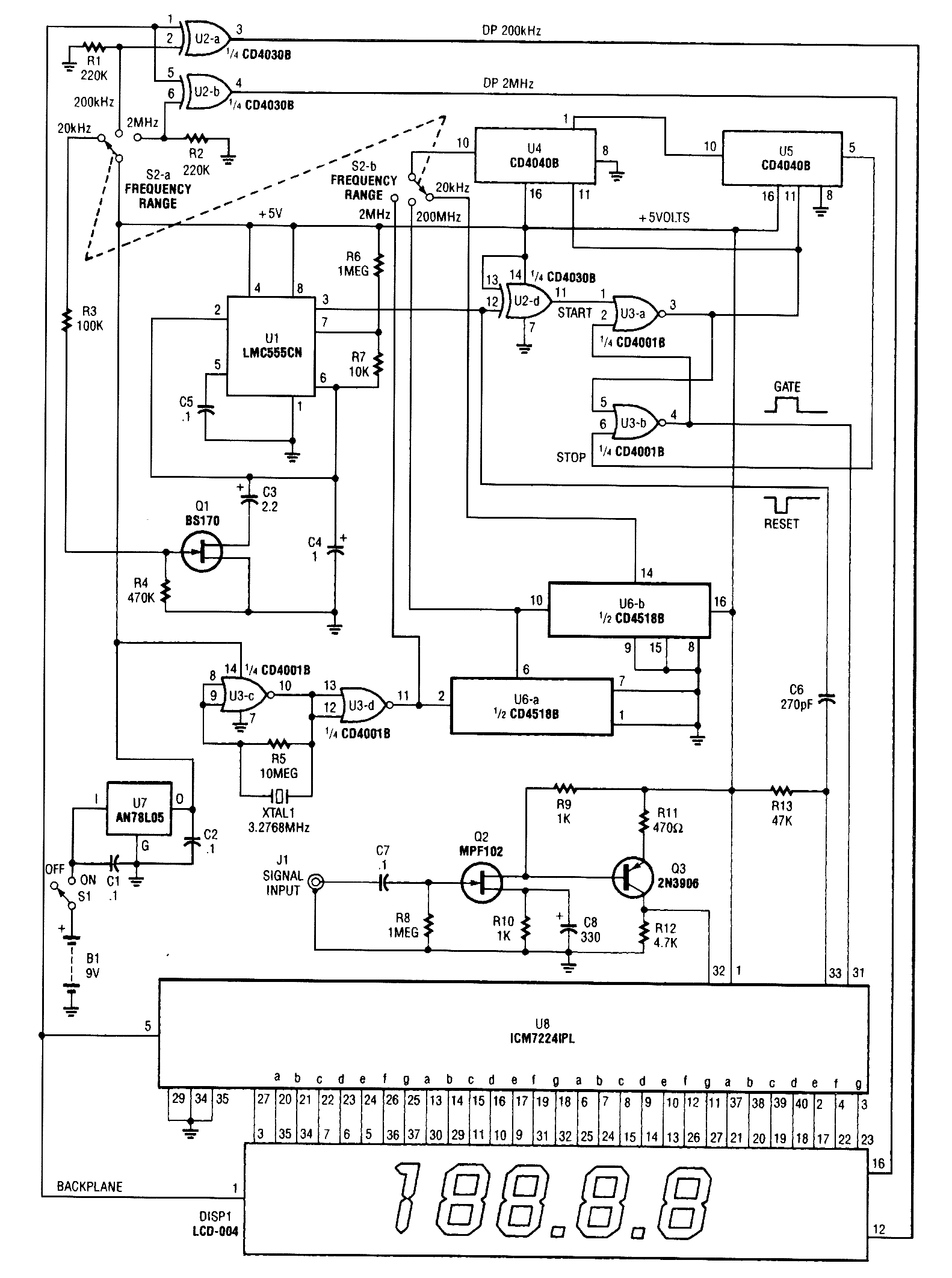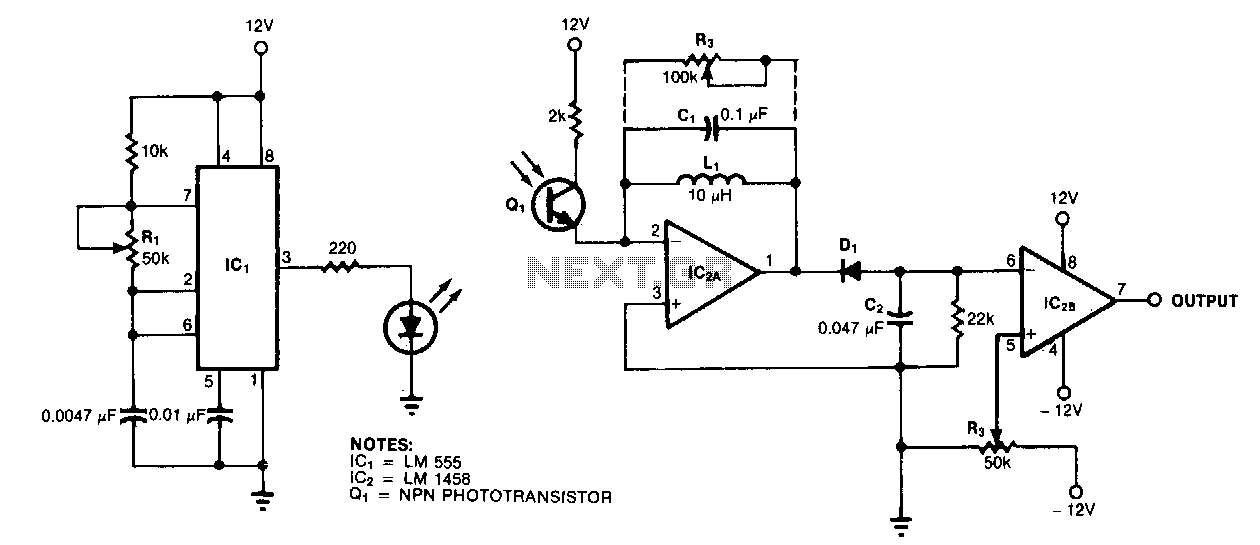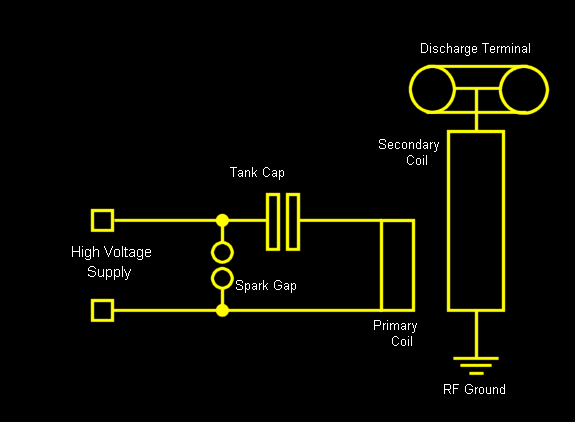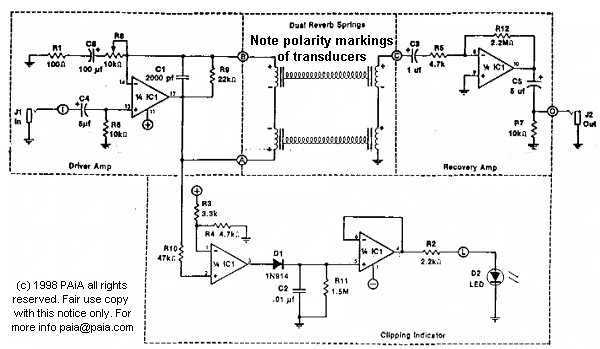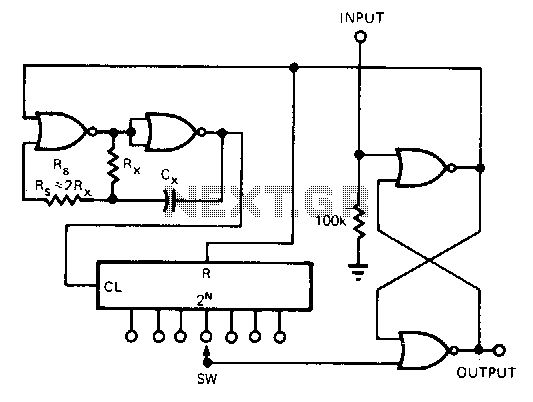
RING OF 7 COUNTER
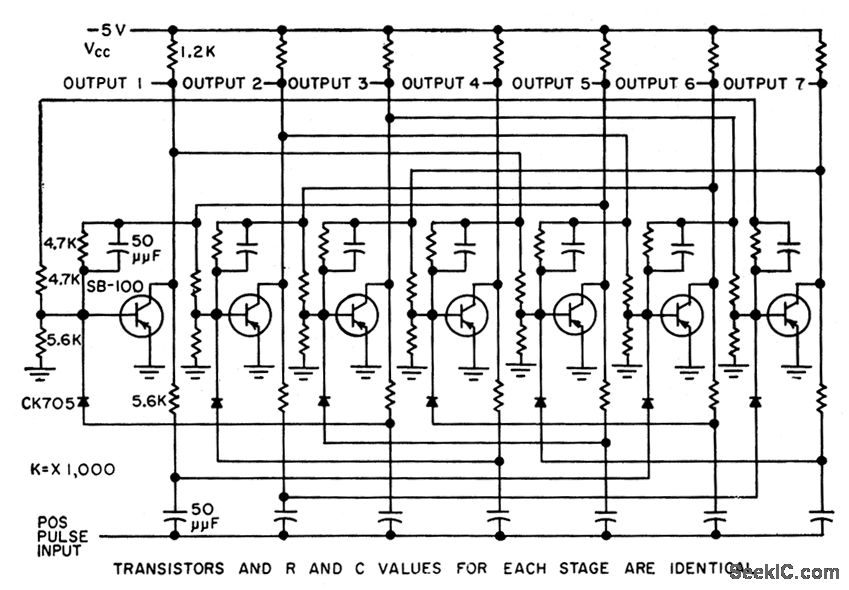
Uses surface-barrier transistors in an arrangement where a pattern of four on stages is stepped along a ring, allowing the maximum number of stages in the ring to be significantly higher than in conventional rings. -W. Carlson, Ring Counter has Increased Count Capacity, Electronics 31:15, p 89-91.
The described circuit utilizes surface-barrier transistors arranged in a unique configuration to create an advanced ring counter. This type of counter is designed to enhance the counting capacity by employing a stepped arrangement of four active stages that circulate around a ring. The innovative design allows for a greater number of stages compared to traditional ring counters, which typically have a limited capacity due to their linear arrangement.
In this configuration, each surface-barrier transistor acts as a switching element, enabling the circuit to toggle between different states as it progresses through the stages. The stepping mechanism facilitates the sequential activation of each transistor, resulting in a binary counting sequence that can be extended by adding more stages along the ring. The ability to increase the number of stages significantly enhances the counter's functionality, making it suitable for applications requiring high-speed counting and data processing.
The overall performance of the ring counter is influenced by the characteristics of the surface-barrier transistors, which provide improved switching speeds and reduced power consumption. This makes the circuit highly efficient for use in various electronic applications, including digital signal processing, telecommunications, and advanced computing systems. The design's modular nature also allows for easy scalability, enabling engineers to tailor the counter's capacity to meet specific project requirements.Uses surface-barrier transistors in arrangement wherein pattern of four on stages is stepped along ring, per mining maximum number of stages in ring lo be much higher than in conventional rings. -W. Carlson, Ring Counter has Increased Count Capacity, Electronis 31:15, p 89-91. 🔗 External reference
The described circuit utilizes surface-barrier transistors arranged in a unique configuration to create an advanced ring counter. This type of counter is designed to enhance the counting capacity by employing a stepped arrangement of four active stages that circulate around a ring. The innovative design allows for a greater number of stages compared to traditional ring counters, which typically have a limited capacity due to their linear arrangement.
In this configuration, each surface-barrier transistor acts as a switching element, enabling the circuit to toggle between different states as it progresses through the stages. The stepping mechanism facilitates the sequential activation of each transistor, resulting in a binary counting sequence that can be extended by adding more stages along the ring. The ability to increase the number of stages significantly enhances the counter's functionality, making it suitable for applications requiring high-speed counting and data processing.
The overall performance of the ring counter is influenced by the characteristics of the surface-barrier transistors, which provide improved switching speeds and reduced power consumption. This makes the circuit highly efficient for use in various electronic applications, including digital signal processing, telecommunications, and advanced computing systems. The design's modular nature also allows for easy scalability, enabling engineers to tailor the counter's capacity to meet specific project requirements.Uses surface-barrier transistors in arrangement wherein pattern of four on stages is stepped along ring, per mining maximum number of stages in ring lo be much higher than in conventional rings. -W. Carlson, Ring Counter has Increased Count Capacity, Electronis 31:15, p 89-91. 🔗 External reference
Warning: include(partials/cookie-banner.php): Failed to open stream: Permission denied in /var/www/html/nextgr/view-circuit.php on line 713
Warning: include(): Failed opening 'partials/cookie-banner.php' for inclusion (include_path='.:/usr/share/php') in /var/www/html/nextgr/view-circuit.php on line 713
